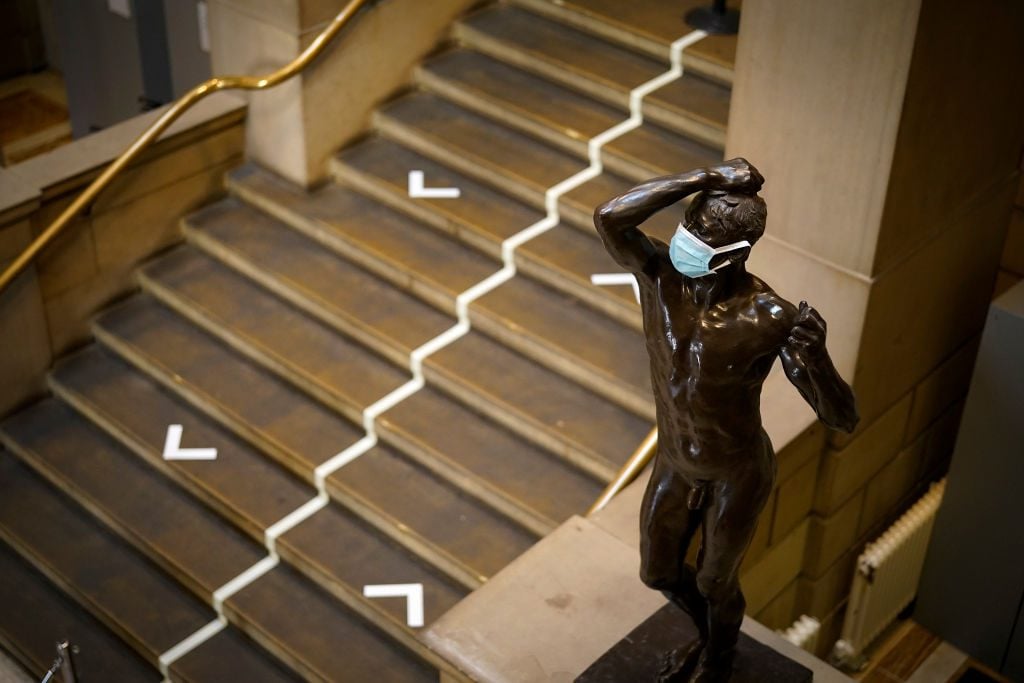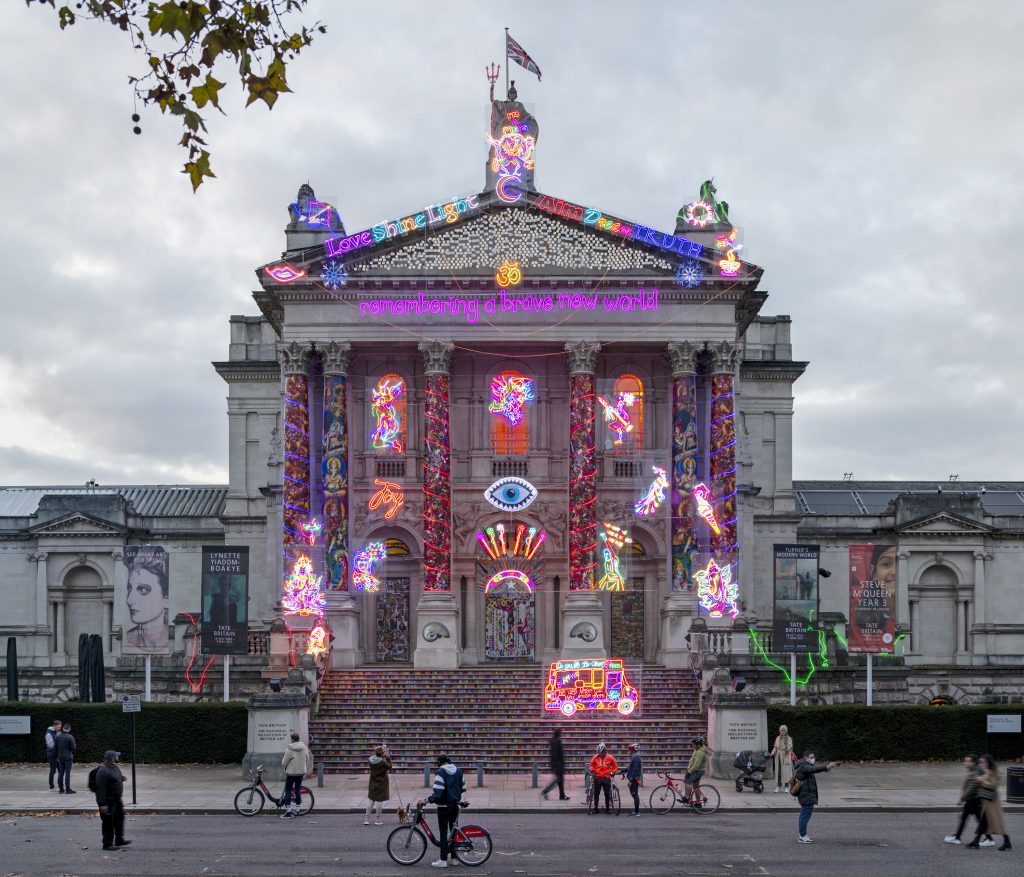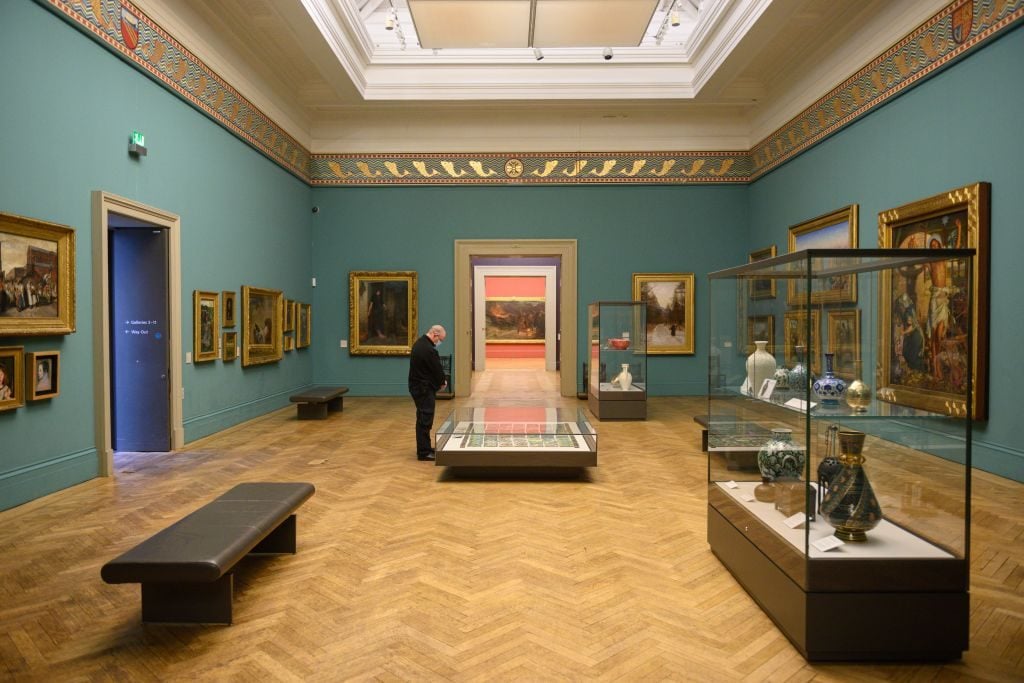Art World
England’s Second National Lockdown Is Over. Here’s What the Country’s New Rules Mean for Museums and Galleries
Cultural institutions in the harder-hit areas of the country have expressed disappointment that they must remain closed.

Cultural institutions in the harder-hit areas of the country have expressed disappointment that they must remain closed.

Naomi Rea

England has lifted its second national lockdown and entered a new phase in its plan to control the coronavirus pandemic.
While museums and public galleries in lower-risk zones have been permitted to reopen, institutions in the harder-hit areas of the country, outside London, have expressed disappointment that they must remain closed.
British prime minister Boris Johnson, who made the announcement saying England would return to a tiered system of local restriction that place most of the country under tougher measures, apologized for the “heartache and frustration” the new rules will cause, but emphasized the need to bear down.
As of December 2, the country has been divided into three risk categories. In Tier 1 zones, museums are open but visitors are limited to groups of six. In Tier 2, where they are also open, visitors are not allowed to enter with someone outside their own household or support bubble. And in Tier 3, where infections are rapidly rising, museums must remain closed.

Chila Burman, Winter Commission, Tate Britain. Courtesy Tate Britain.
In the capital, which has been designated Tier 2, Londoners are already flocking back to galleries, with the long-awaited Lynette Yiadom-Boakye show finally permitted to open at Tate Britain, and the Artemisia Gentileschi exhibition at National Gallery reopening as well.
“We’re are pleased to be able to open our doors again, and by doing so, display a show of confidence and belief that we may be turning a corner after this traumatic year for everyone,” the director of London’s National Army Museum, Justin Maciejewski, said in a statement.
Commercial galleries are also able to reopen. Goodman Gallery is reopening with a trio of exhibitions by Ghada Amer, David Koloane, and ruby onyinyechi amanze. Across the street, in the newly minted Saatchi Yates gallery, directors Phoebe Saatchi Yates and Arthur Yates say they are “thrilled” with the ability to get back to work after their inaugural exhibition of Swiss artist Pascal Sender closed due to lockdown.

Nick Mooney, a visitor services assistant at Manchester Art Gallery. Photo by OLI SCARFF/AFP via Getty Images.
But elsewhere in the country, spirits are not so high. While commercial galleries, deemed non-essential retail, have been allowed to open across all tiers alongside businesses like hair salons, some institutions were surprised to learn that they would not be permitted to welcome visitors. Institutions that must remain closed include Nottingham Contemporary and the Bristol Museum and Art Gallery.
Alistair Hudson, the director of Manchester Art Gallery, which also remains closed, wrote in an open letter that the cultural sector is “devastated” by the news, adding that it was “galling” in light of the reopening of retail businesses.
“From December 2 we can hit the shops and the treadmill but we cannot find solace and wander freely in a spacious 3,000-sq-meter art gallery with carefully timed and limited entry,” Hudson wrote. “Not only does this defy logic, it seems to penalize specifically cultural organizations that have worked so relentlessly and invested so heavily to make ourselves safe and secure places to visit—and all with generous government support.”
Jonathan Watkins, director of the Ikon Gallery in Birmingham, which is also in Tier 3, had been looking forward to opening a group show the gallery had improvised in response to the pandemic. But the gallery is making do with an online version for the moment.
“During these extraordinary times, calling for extraordinary measures, we could not be more aware of the quick diversions and U-turns required, taking us through unfamiliar landscapes,” Watkins tells Artnet News.
Meanwhile, Clare Lilley, the director of programs at Yorkshire Sculpture Park, which is also in Tier 3, says she is “relieved” that the park has been able to offer a “lifeline” to the public with its 500 acres of outdoor displays, with around 100 sculptures and installations.
“At this time of great uncertainty, Yorkshire Sculpture Park offers a wonderful opportunity to see modern and contemporary art in a safe place, where families and support bubbles can come together to celebrate and enjoy a remarkable collection in an exceptional landscape,” Lilley tells Artnet News. “We really believe that the sculpture park is part of COVID recovery in the region.”